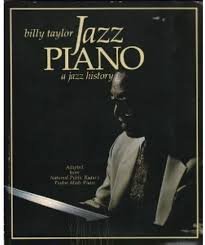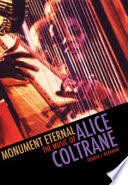Who was Alice Coltrane?
“I heard music that was just beyond anything I had heard before. I would hear country gospel. I would hear the down-home gospel. I would hear the kind of gospel you almost wouldn’t need music with. It was fl owing from the heart, from the soul.“
Alice Coltrane
Alice Coltrane Turiyasangitananda (Detroit, August 27, 1937 – Los Angeles, January 12, 2007), was an American composer, pianist, organist, harpist, and singer, and was one of the few musicians to have used the harp as a member of jazz bands.
Best Sheet Music download from our Library.
Alice McLeod, her maiden name, was the firstborn in her family, and inherited her passion for music from her mother, a church chorister. He began playing the organ in some clubs in Detroit until, at the end of the 1950s, he traveled to Paris, where, in addition to studying classical music, he studied jazz with the pianist Bud Powell, with whom he began to play jazz professionally as pianist at the Blue Note Jazz Club in the French capital.

In the early sixties, she formed a jazz duo with vibraphonist Terry Pollard, and with the Terry Gibbs Quartet, a formation where she met John Coltrane, her future husband. Alice and John married in 1965 in Ciudad Juárez (Mexico. Her relationship with John Coltrane was decisive for the pianist to replace McCoy Tyner in his quartet from 1966 until the saxophonist’s death on July 17, 1967. Alice influenced in the spiritual drift of Coltrane’s music, clearly manifested in the famous recording of “A Love Supreme.”
Alice Coltrane recorded thirteen albums as the leader of his own groups, his debut being in 1967 with the album: “Monastic Trio”. His interest in gospel, classical and jazz music led to the creation of his own innovative style, taking her from a common style of jazz towards a more cosmic and spiritual vision.
She excelled at piano, organ and harp, in addition to composition, and his albums Universal Consciousness (1971) and World Galaxy (1972) show the progression from a four-piece group to a more orchestral approach, with arrangements for strings and harps. Until 1973, she worked with the agency Impulse! Records, the brand with which John had worked in his last years. From 1973 to 1978, she worked primarily with Warner Bros. Records.
In 1972, after a long period of reflection following the death of her husband, Alice Coltrane abandoned her secular life and, three years later, founded the Vedantic Center, a space for studying the Vedic religious tradition.7
In the late 70s , she adopted the Sanskrit name Turiyasanginananda and moved the center to the ashram (monastery), establishing itself near Malibu, California, in 1983.
Alice Coltrane served as spiritual director there and helped develop original tunes based on traditional Hindu chants. During the 1990s, Alice renewed interest in her musical work, and it was not until 2006, when Alice Coltrane returned to the stage, on a tour that included the Ann Arbor’s Hill Auditorium, of the University Musical Society of the University from Michigan on September 23, which coincided with what would have been John Coltrane’s 80th birthday, and ended his tour with a concert on November 4 at the San Francisco Jazz Festival, where he played with his son Ravi, the percussionist. Roy Haynes and bassist Charlie Haden.
Alice Coltrane died on January 12, 2007, in Los Angeles at the age of 69. She’s buried alongside John Coltrane at Pinelawn Memorial Park, Farmingdale, Suffolk County, New York.
Please, subscribe to our Library. Thank you!
Alice Coltrane, Monument Eternal, at the The Hammer Museum at UCLA
- Feb 9 – May 4, 2025
The exhibition Alice Coltrane, Monument Eternal is inspired by the life and legacy of jazz musician, devotional leader, and mother Alice Coltrane (b. 1937, Detroit). The title takes its name from her book Monument Eternal (1977), which reflected her newfound spiritual beliefs; the loss of her husband, the saxophonist John Coltrane; and the path to healing and self-discovery. The exhibition presents works by contemporary American artists paired with ephemera from Coltrane’s personal archive. Featuring a range of mediums including video, installation, performance, and sculpture together with Coltrane’s archival handwritten sheet music, unreleased audio recordings, and rarely seen video footage, Alice Coltrane, Monument Eternal explores themes including spiritual transcendence, sonic innovation, and architectural intimacy to honor Coltrane’s cultural output and practice.

